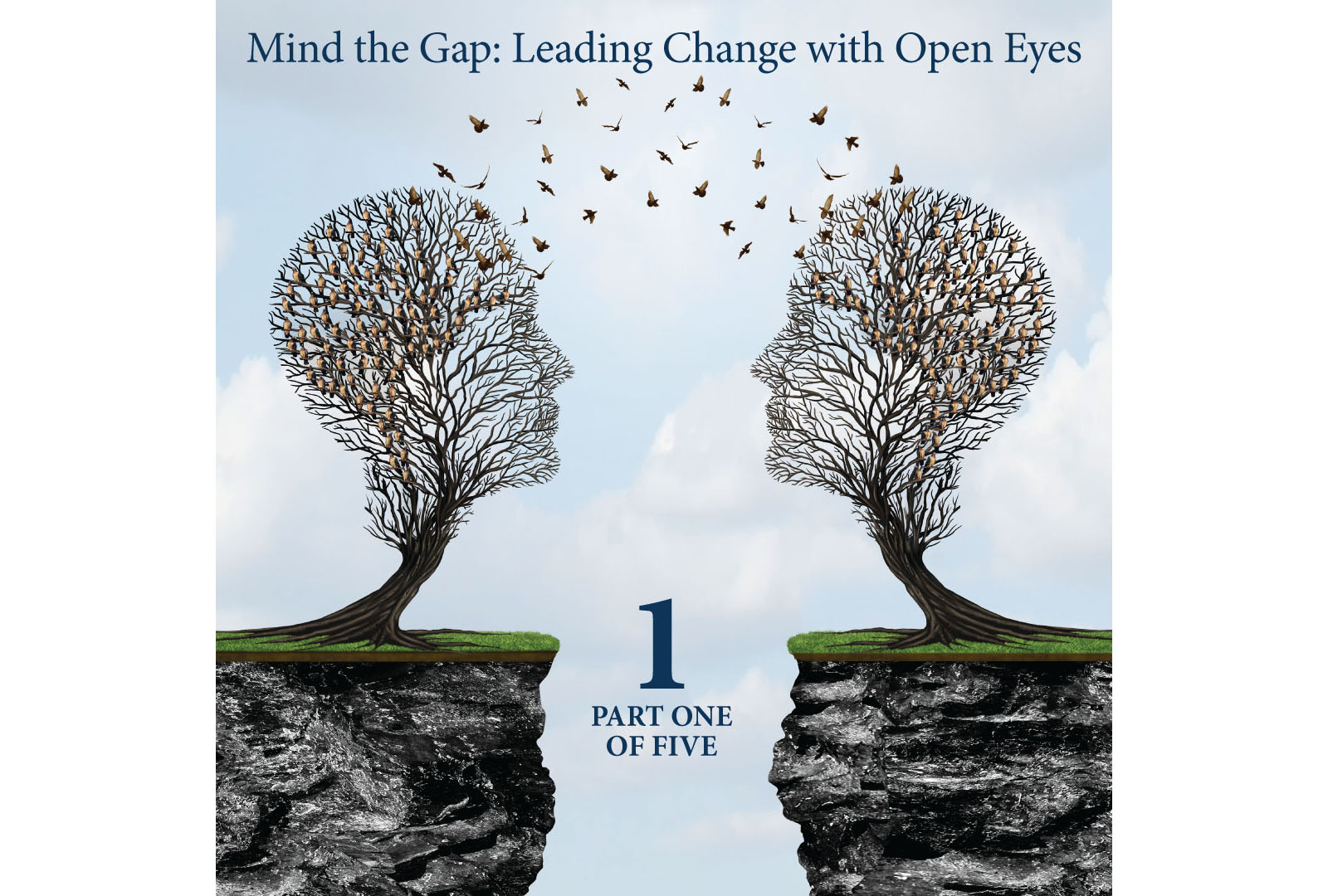Mind The Gap: Leading Change With Open Eyes – Part 1
The Alternate Realities of Organizational Change
Two decades ago, change was framed as an innovative and noble undertaking organizations intentionally created for success. Today, perpetual change is accepted as a natural state for all organizations. Unfortunately, familiarity does not always create successful change rollouts, and that can often be attributed to a gap in perception, experience, and impact between those at the top and their teams below. The result is a very real gap that plays out like this observation I recently heard from a client:
Sandra sighed and said, “Since I came on board as CEO twelve months ago, we’ve been working on a restructure strategy. We’ve been carefully managing this initiative to shape our roadmap and our leadership team intentionally held off rolling-out a full communication plan until things were finalized. Yet it’s not like we’ve not been talking about needing to make changes to support the business with our teams. It’s not like they didn’t know there would be changes coming. After hearing the themes our teams have shared with you – destabilization, fear of retribution, untrustworthy leadership – clearly, this not what we expected. What can we do now?”
I’ve worked with hundreds of senior executives during my 25 years as a consultant on organizational change and this alternate reality conversation is not uncommon. People at the top can be, to varying degrees, out of touch with the implications and effectiveness of their change efforts at the ground level and the impact on their teams. To be fair, many leaders do not fall into this category, and for those who do, their lack of awareness isn’t a sign of being uncaring or incompetent. Instead, it’s due to a combination of systemic and human dynamics that create an inherent gap between these leadership levels. With that in mind, here are three truths about change:
- In your organization right now, smart, caring, committed people are holding back valuable feedback about current change rollouts – and for good reason.
- While people experience organizational changes personally, leaders need to view, value, and work with individuals’ behavior as data about their systems, not as a commentary on personalities.
- No amount of resiliency training will make change efforts go smoothly unless senior executives intentionally work to close the perception-reality gap and take a regular pulse on their organization.
Leaders who internalize these truths and actively “mind the gap” will create better change outcomes in their organizations. How? By intentionally seeking to stay connected, learn, align, and pivot. In this blog series I’ll share how this perception-reality gap impact teams and organizational success and reveal the combination of systemic and human dynamics that perpetuate the gap. I’ll also offer best practices you can take onboard from effective change leaders to stay in tune through change. For now, I’ll leave you with a couple questions to consider.
Leadership Reflection
- Consider a change effort you’re leading right now. What practices do you have in place to take a regular pulse on how the organization is experiencing this change?
- In what ways has taking this pulse helped you learn and improve results?

